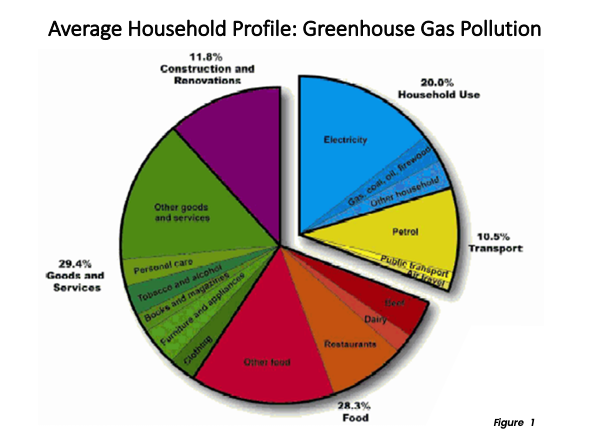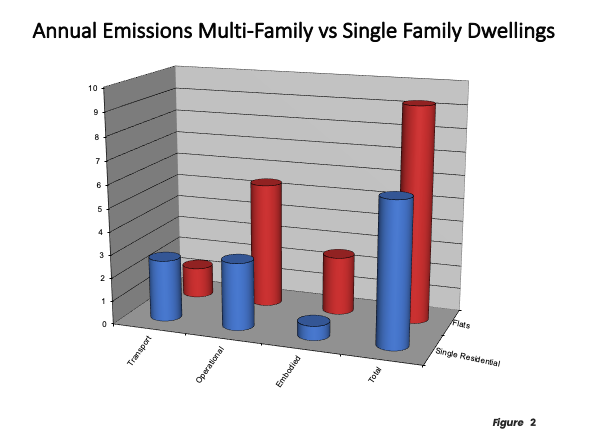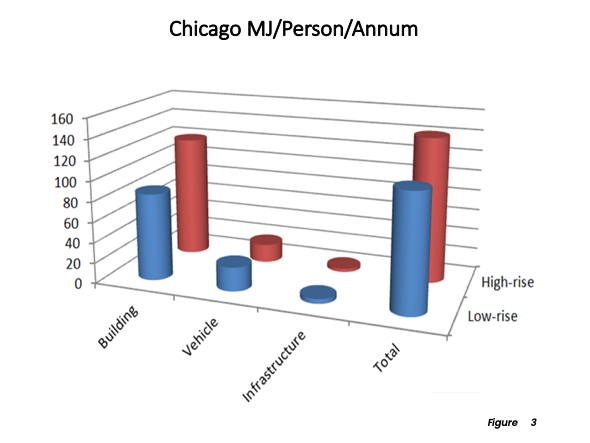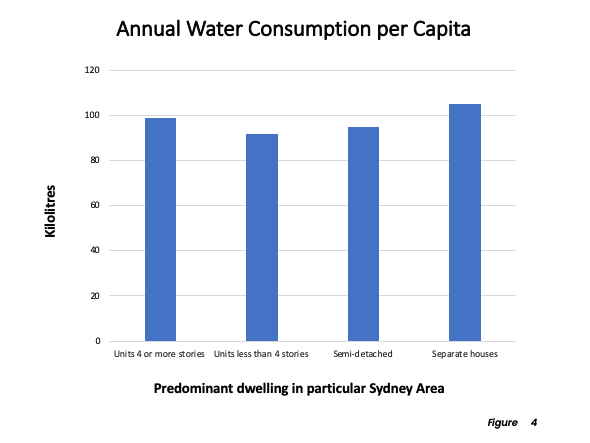
The proponents of currently fashionable planning doctrines favouring density maintain, among other factors, that high-density planning is more environmentally sustainable. Policies based on these doctrines are being applied in Australian capital cities--- Canberra, Sydney, Melbourne, Adelaide, Brisbane, Perth and to some extent Darwin and Hobart.
The assumption that high-density is environmentally superior seems to be based on intuition as no proof is provided to support this claim. Rather, considerable evidence is emerging that this is not the case.
Yet these policies are followed with often religious zeal. Faced with increasing populations, planners have insisted on imposing restrictive growth rings around cities and, in the case of Sydney requiring quotas for increasing density in existing low density communities. High-density should of course be available to those who prefer it and it is not suggested that there is anything wrong with this style of living but there are good reasons why it should not be imposed onto unwilling communities who favour other lifestyles and other urban environments.
What the Evidence Tells Us
A comprehensive study on greenhouse gas emissions that people in Australia are responsible for was published online by the Australian Conservation Foundation (ACF). This is no longer available on line but the underlying paper can be referenced. The report showed carbon dioxide equivalent emissions per postal code (zip code) a person is responsible for at the final point of consumption. Contrary to expectations, the findings revealed that emissions are greater per person living in inner city high density areas. The annual per capita in the inner city high density areas came out to average 27.9 tonnes and in the outer low density areas 17.5 tonnes.
The study summarised the proportion various aspects from households contribute to these emissions (Figure 1).

Contrary to the assertions of high-density proponents transport accounts for only 10.5% of emissions while a total of 31.8% of emissions are dwelling related (gas and electricity use, renovations and amortised construction). A comparison of these factors for single-residential and for units in multi-storey dwellings is shown in Figure 2. Surprisingly it is apparent that annual emissions per person in multi-family high-rise exceed that of those living in single-residential dwellings.

Reasons for this result include the energy consumed by the use of elevators, clothes dryers, air-conditioners as well as lighting and air conditioning common areas such as parking garages and foyers. Most studies do not include this latter important element, simply because they are based upon consumer bills, not common consumption. Embodied energy, which is the energy of construction amortised for the life of the building is much higher from high-rise, due to its steel and concrete components and its method of construction including excavation. An additional factor relating to greater per person emissions probably relates to lower occupancy rates revealed in the ACF study in high-rises compared to single-family residences.
With regard to energy consumption overall warm weather causes may make Australia a special case due to its climate being very different to that in northern countries. If dwellings are too close together they are more difficult to cool whereas it is easier to heat them. Also, cooling technically needs more energy than heating as a much larger volume of air needs to be circulated. However the pattern of data from Chicago (which has an overall cooler climate) is similar to the findings of the ACF study, indicating dwelling related factors there, as in Australia, exceed transport related factors while less residents per unit leads to per person emissions being greater in denser areas (Figure 3).

The ACF data in Figure 1 reveals that consumption of goods, services and food account for 57.7% of household emissions. It has been suggested that as people living in inner suburbs tend to be wealthier than those in outer suburbs so they produce more emissions. However a sample of households with equivalent incomes (table 6 in the underlying paper) indicates emissions from those living in the denser inner suburbs emit an annual average of169 GJ per capita which exceeds the 96 GJ per capita emissions from households with equivalent income living in the outer suburbs.
The Role of Transportation
High density proponents assert that energy used in transport for people living in the low density outer suburbs exceeds that of those living in higher density inner suburbs. They often assume that these suburbanites travel long distances to work by car to the CBD. However Figures 2 and 3 reveal that transport energy is a minor factor in the emission comparison of living in different densities. This is confirmed by the data in table 6 in the underlying paper which shows that for the equivalent income sample the per capita annual energy requirement for those in the higher density is roughly similar as that in the lower density suburbs (in fact in this sample slightly more).
People living in low density outer areas do not necessarily have to travel large distances to the CBD for work. A study of job dispersion reveals in the Sydney metropolitan area only 14.5% of jobs are currently in the CBD. A further 8.4% are in major employment centres and 77.1% are distributed all over the city area. In Melbourne only 15.5% of jobs are in the CBD.
In addition, although private transport generates somewhat higher greenhouse gas emissions than public transport, the difference is not nearly as much as people think. Greenhouse gas emissions per passenger kilometer on Sydney City Rail are 105 gm. (personal correspondence). The figure for the average modern car is 155 gm. It is much less for modern hybrid vehicles, being a mere 70 gm.
Another consideration regarding emissions is that traffic congestion increases whenever high-density policies are imposed. Any slight increase that may occur in the proportion of people using public transport is overwhelmed by the greater number of people squeezed into that area. The resulting congestion causes higher fuel consumption and dangerous exhaust emissions. In reality many people living in higher densities still require their cars for getting to the many workplaces, sporting facilities, transporting large items as well as visiting the homes of relatives and friends. A study of Melbourne areas shows that the people squeezed into newly converted dense areas did not use public transport to any greater extent than before densification, there being little or no change in their percentage of car use compared to living in the previous low-density.
The underlying paper also indicates annual per capita energy requirement for non-urban travel for those in higher density to be 2 GJ compared to 1 GJ for those in lower density. One can speculate that those living in higher density tend to travel out of their abode more often. This may have been even more the case as a result of the Covid-19 epidemic.
Another environmental misconception relates to water consumption. Figure 4 shows there is no significant difference in per capita water consumption between those living in multiunit dwellings or separate houses situated in Eastern Sydney in spite of the necessity to water gardens for the latter.

Let's Get Beyond the Mythology
The rationale behind the imposition of high density in Australia is perplexing. Australia is not short of land, only some 0.2% is urbanised. In addition to negative environmental aspects other studies show the densification policy causes housing unaffordability, traffic congestion, overcrowding, reduced housing choice, decreased community amenity and negative health aspects. Policies should be based on reality, not on mere intuitive supposition or ideological fantasy.
(Dr) Tony Recsei has a background in chemistry and is an environmental consultant. Since retiring he has taken an interest in community affairs and is president of the Save Our Suburbs community group which opposes over-development forced onto communities by the New South Wales State Government.
Photo credit: Dover Heights, Sydney Australia by Meganesia Wikimedia under CC 4.0 License.












